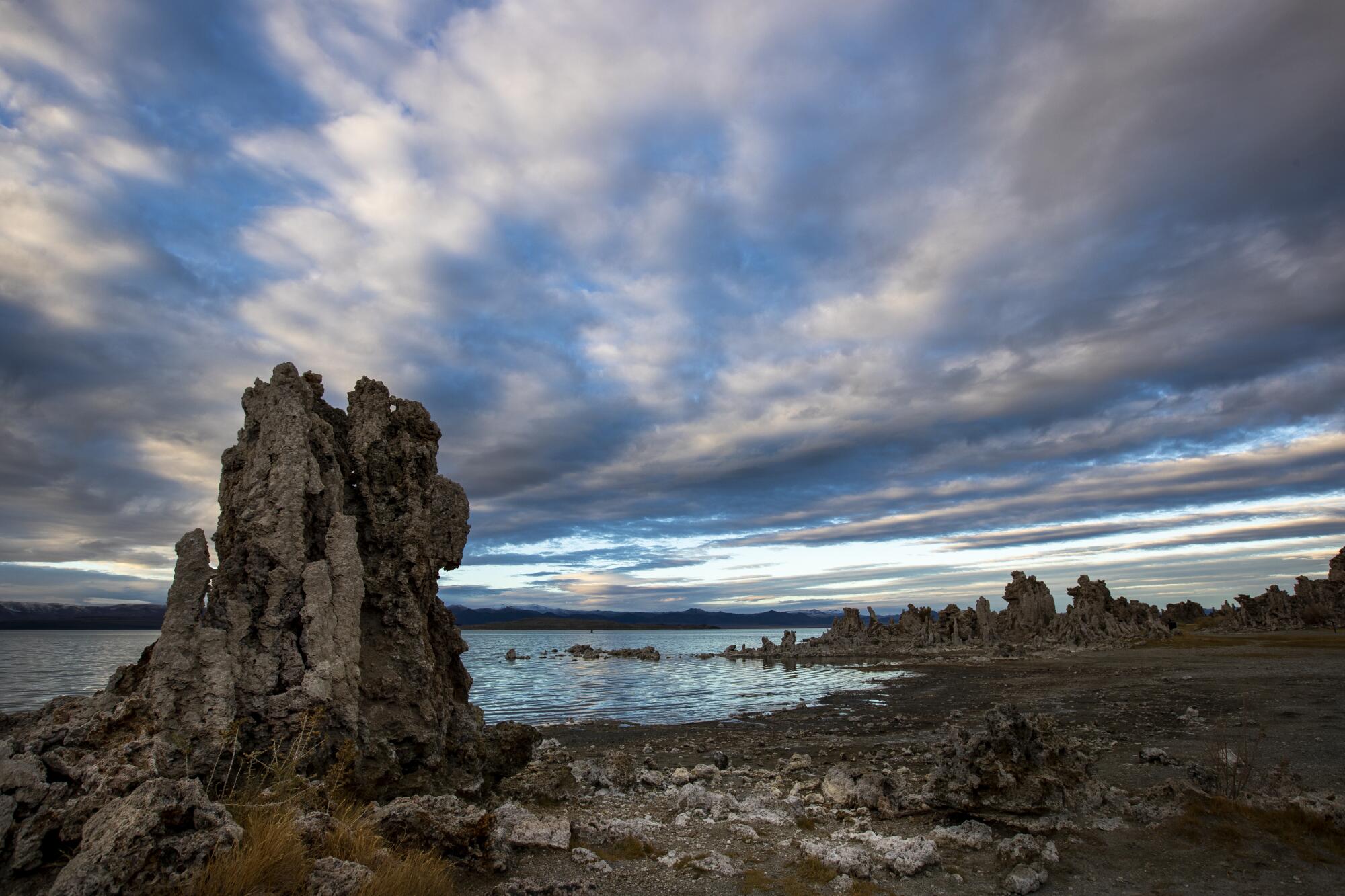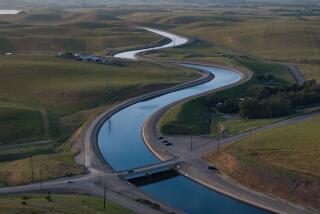
- Share via
City leaders in Los Angeles have announced plans to take a limited amount of water from creeks that feed Mono Lake this year, a step that environmentalists say will help build on a recent rise in the lake’s level over the last year.
The Los Angeles Department of Water and Power said it plans to export 4,500 acre-feet of water from the Mono Basin during the current runoff year, the same amount that was diverted the previous year, and enough to supply about 18,000 households for a year.
Under the current rules, the city could take much more — up to 16,000 acre-feet this year. But environmental advocates had recently urged Mayor Karen Bass not to increase water diversions to help preserve recent gains and begin to boost the long-depleted lake toward healthier levels. They praised the decision by city leaders as an important step.
“It’s a historic decision in the history of Mono Lake,” said Mark Gold, director of water scarcity solutions for the Natural Resources Defense Council. “I think it’s the first major environmental accomplishment for water in the Bass administration.”
Aggressive and impactful reporting on climate change, the environment, health and science.
DWP officials detailed their expected water diversions from the region of the Eastern Sierra in an annual plan for the runoff year, which began in April.
Environmentalists said it’s the first time in 30 years that city officials have announced plans to take less water than the maximum amount allowed under a 1994 decision by the State Water Resources Control Board. However, DWP said in the plan that it will review water conditions in November, and at that point could still decide to export additional water if deemed necessary, up to the limit of 16,000 acre-feet.
“Major kudos to the Bass administration for not taking all the water that they’re entitled to,” Gold said.
“I think it’s the ultimate olive branch to the environmental community,” he said, and a “show of good faith on the part of the city.”
For decades, the Los Angeles Department of Water and Power has relied on long-standing water rights to divert from the streams that feed Mono Lake.
Gold and other advocates sent a letter to Bass in March, saying that not increasing water diversions this year would be a “meaningful action” the city can take at a time when supplies are ample following the very wet winter of 2023 and this year’s substantial snow and rain. They also said doing this would complement efforts toward long-term solutions for Mono Lake.
City leaders agreed.
“Mayor Bass has been clear that building a greener Los Angeles is one of her top priorities and protecting water resources certainly falls into that,” said Nancy Sutley, deputy mayor of energy and sustainability.
Sutley said in an email that the mayor and DWP “are working together to implement new ways to protect the environment in sustainable and efficient ways.”
The city has been diverting water from the Mono Basin since 1941, transporting it south through the Los Angeles Aqueduct.
For decades, the withdrawals of water from the area’s creeks led to dramatic declines in the lake. As the saline lake retreated, rock formations called tufa, which had formed underwater, were left exposed along the shorelines.
A 1994 ruling by the state water board called for raising the lake level to 6,392 feet — about 8 feet above the current level.
The lake’s level has risen about 5 feet since the start of 2023, when the historic snowpack in the Sierra Nevada sent large quantities of runoff streaming from the mountains.
The decision by city leaders this year will help preserve those gains, said Geoffrey McQuilkin, executive director of the Mono Lake Committee.
“Mono Lake will be three vertical inches higher than it would have been if DWP were to take the full 16,000 acre-feet of allowed export,” McQuilkin wrote in a blog post.
He said the step shows Bass’ “commitment to a sustainable relationship” between the city and Mono Lake, and a renewed commitment to achieve the lake level target mandated by the state water board 30 years ago.
“And though it is just a fraction of the 8 feet separating Mono Lake today from its required healthy level, the inches quickly add up as the years go by,” McQuilkin said.
The goal, he said, is to get Mono Lake back to a level that allows the ecosystem to thrive.
L.A. County has captured enough stormwater to supply an estimated 2.4 million people for a year. Officials say they plan to capture more runoff in the future.
Mono Lake provides habitat for imperiled shorebirds such as Wilson’s phalaropes, which stop at saline lakes during their long migrations, feeding on brine flies and other invertebrates.
The decision by city leaders “opens the door to have that conversation about how do we go forward in the years ahead and make sure we achieve the protection at Mono Lake that we’ve all agreed on implementing,” McQuilkin said.
Bruce Reznik, executive director of Los Angeles Waterkeeper, said the decision represents a big shift for the city and DWP.
“In the coming years, I would like to see more of the same,” Reznik said. “I’d like to see the city as they move forward, even if we’re not in as wet a year, do what they can to minimize what the take is from Mono Lake. Let it come back to health inch by inch.”
Reznik says California now has an opportunity to restore one of its ecological treasures while also lessening L.A.’s dependence on water imported from hundreds of miles away.
“We have to be more cognizant of local resilient water supplies that make us more water secure,” he said. “Let’s take this win, and see if we can build on it — on our move toward more local resilient water.”
Conservation efforts in recent years have helped reduce overall water use in Los Angeles. The shift to more local water supplies can be accelerated, Reznik said, through investments in capturing more stormwater, cleaning up contaminated groundwater and recycling wastewater.
“The more we accept the mindset that we just can’t keep taking water from everywhere, and that we need to invest locally, the more I think we’re going to see all the benefits,” he said.
Toward a more sustainable California
Get Boiling Point, our newsletter exploring climate change, energy and the environment, and become part of the conversation — and the solution.
You may occasionally receive promotional content from the Los Angeles Times.










